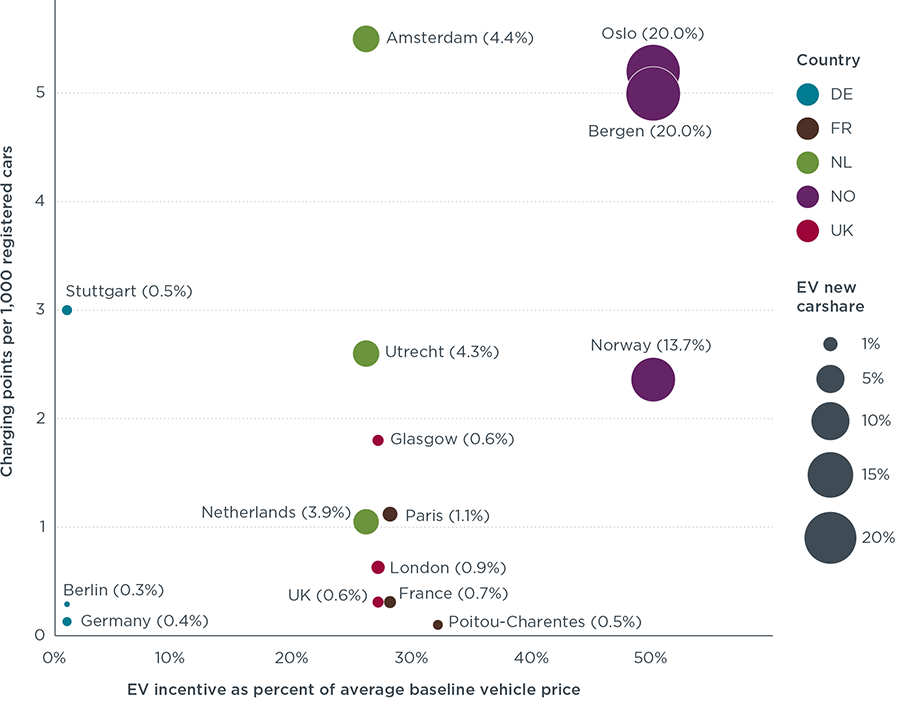Assessment of leading electric vehicle promotion activities in United States cities (2015)
White paper
Comparison of leading electric vehicle policy and deployment in Europe
This study investigates consumer incentives for electric vehicles (EVs), including plug-in hybrid electric vehicles (PHEVs) and battery electric vehicles (BEVs), in the five largest EV markets in Europe: Germany, the United Kingdom, France, the Netherlands, and Norway. These markets together account for more than 80% of all European EV registrations in 2014.
The paper looks at incentives at the national level, and uses 10 case studies of European cities/regions to examine how local governments can complement national incentives. The focus is on fiscal incentives, charging infrastructure density, and EV market shares as key indicators of countries’ readiness to transition to electric mobility. The study analyzes the diffusion of EVs at the regional level, including maps of EV market shares and charging infrastructure for each market.

Plot of fiscal incentives for EVs and charging point density for five European countries and 10 cities/regions. The size of the marker represents the EV share of newly registered vehicles in 2014 (also presented more precisely within parentheses).
In addition to providing a snapshot of the largest European EV markets, the study identifies effective incentives for driving the uptake of electric vehicles:
- Direct consumer incentives: Substantial fiscal incentives are the most important driver of EV uptake. Countries and cities with high fiscal incentives have been more successful at transitioning to electric mobility.
- Indirect consumer incentives: Fiscal incentives alone are not sufficient to ensure uptake. Promotional activities are needed to create consumer awareness. Preferential access to low-emission zones or high-occupancy vehicle lanes, electric car-sharing platforms, introducing EVs into public fleets, and consumer outreach events are common and effective measures to raise awareness of electric mobility.
- Charging infrastructure: Another prerequisite for electric mobility, because it helps overcome range anxiety. Countries with dense public charging infrastructure have higher EV market shares, though other factors (such as availability of fast charging infrastructure and opportunities to charge at home) should also be considered.
- Policy design: Information on incentives and electric mobility should be transparent and easily accessible, because consumer awareness is a prerequisite for electric mobility. Financial sustainability is also key: stable incentives and secure funding ensure planning security and signal long-term support for EVs. National-level strategies and incentives can ensure a cohesive approach, while regional and city-level policies can complement national policies and tailor incentives to local needs.
